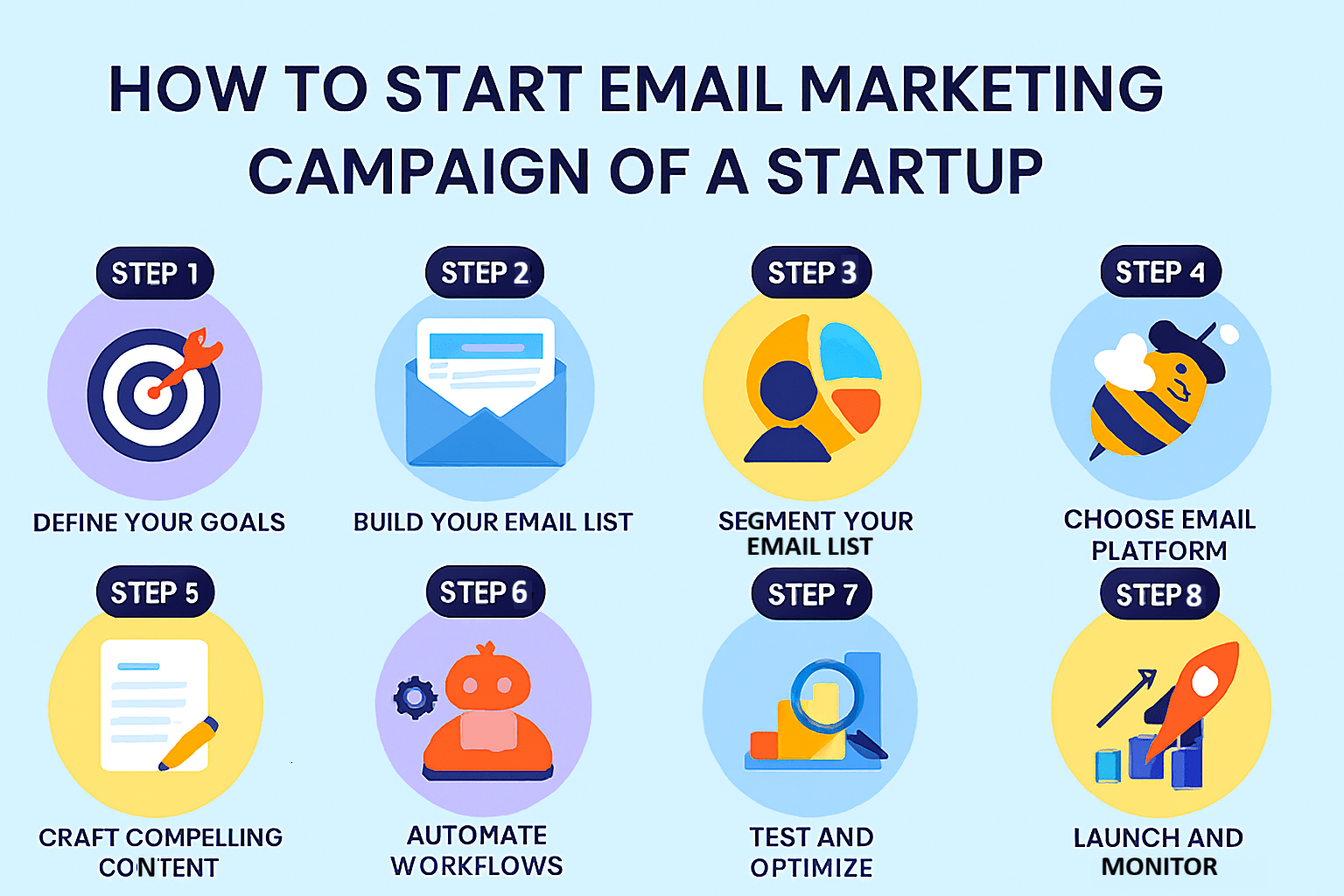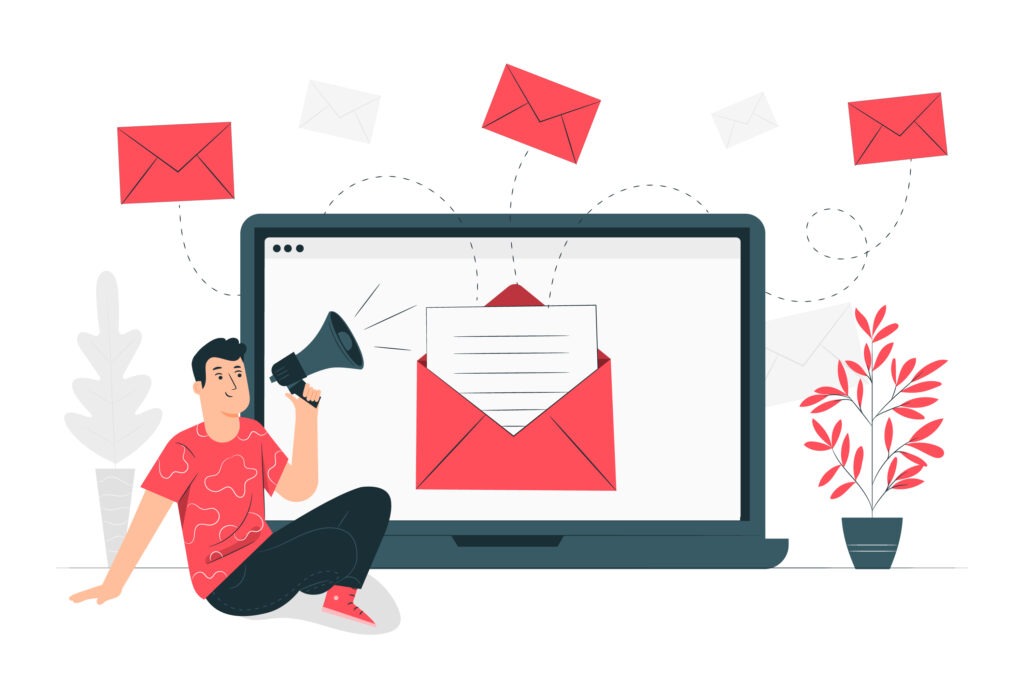Launching a startup is exciting, but one of the biggest challenges is reaching and engaging your audience without burning through limited resources. Email marketing remains one of the most cost-effective and high-ROI channels, delivering up to $36 for every $1 spent. For startups, this means direct communication with customers, brand building, and measurable growth. This comprehensive guide will walk you through everything you need to know to start an email marketing campaign for your startup — from strategy and setup to execution and optimization.
One Stop Solution to Register all Types of Companies in India
Email marketing is a powerful and cost-effective way to reach your target audience and grow your business. Email marketing can help you build relationships, boost brand awareness, promote your content, generate leads, market your products, and nurture leads. However, email marketing requires a clear strategy and careful execution to achieve your goals.
- Why Email Marketing Matters for Startups
- Steps to Start an Email Marketing Campaign for a Startup
- Step 1: Define Your Goals
- Step 2: Build Your Email List
- Step 3: Segment Your Audience/Email List
- Step 4: Choose the Right Email Marketing Platform
- Step 5: Craft Compelling Email Content
- Step 6: Automate Workflows
- Step 7: Test and Optimize Your Email Campaigns
- Step 8: Launch and Monitor
- Best Practices for Startup Email Marketing
- Common Mistakes to Avoid
- Measuring Success
- Example Campaign Timeline for a Startup
- Conclusion
Why Email Marketing Matters for Startups
- Cost-effective: Minimal investment compared to paid ads.
- Direct communication: Builds personal relationships with customers.
- Scalable: Works for small lists and grows with your business.
- Measurable: Track open rates, click-throughs, and conversions easily.
Steps to Start an Email Marketing Campaign for a Startup

Step 1: Define Your Goals
Before sending a single email, clarify what you want to achieve:
- Drive sales of your product/service
- Build brand awareness
- Generate leads
- Retain customers
- Educate your audience
Pro Tip: Start with one or two measurable goals (e.g., “Get 500 signups in 3 months”) to keep campaigns focused.
Step 2: Build Your Email List
Your list is the backbone of your campaign. You need a list of subscribers who are interested in what you offer and have given you permission to contact them. The best way to grow your email list is to offer something valuable in exchange for their email address, such as a free ebook, a discount code, or a webinar. You can use opt-in forms on your website, social media, or landing pages to collect email addresses.
- Create lead magnets: Free eBooks, discounts, or exclusive content.
- Use signup forms: Place them on your website, blog, or landing pages.
- Networking events: Collect emails at startup meetups or webinars.
Avoid buying email lists — they hurt deliverability and trust.
Step 3: Segment Your Audience/Email List
Not all subscribers are the same. Segmenting helps you send relevant content. They may have different interests, preferences, and behaviors. To send relevant and personalized messages to each group, you need to segment your email list based on criteria such as demographics, location, purchase history, engagement level, etc. Segmentation can help you increase open rates, click-through rates, and conversions. For example, if you are a DSC Provider in Noida, segment your list like those who want a renewal of DSC, who might apply for a new DSC, or a particular type of DSC, area-wise, etc.
- New leads vs. existing customers
- Geographic location
- Interests or behavior (e.g., clicked a product link)
Segmentation increases engagement and reduces unsubscribes.
Step 4: Choose the Right Email Marketing Platform
You need an Email Marketing tool that can help you create, send, and track your email campaigns. There are many options available, such as MailChimp, Constant Contact, HubSpot, and more. Compare these email marketing tools‘ features, pricing, and customer support to find the best fit for your needs.
Popular tools for startups include:
- Mailchimp – beginner-friendly, free tier
- ConvertKit – great for creators
- HubSpot – advanced automation and CRM integration
- Beehiiv – modern, startup-focused platform
Look for features like automation, analytics, templates, and integrations with your website or CRM.
Step 5: Craft Compelling Email Content
Your email must grab attention and deliver value. Your email content should be engaging, informative, and persuasive. It should also match your brand voice and tone. Your email content consists of several elements:
- Subject lines: Short, clear, curiosity-driven. This is the first thing your subscribers see when they receive your email. It should be catchy, concise, and relevant to the email body. It should also create a sense of urgency or curiosity to entice them to open the email.
- Preheader text: This is the snippet of text that appears below or next to the subject line in some email clients. It should complement the subject line and provide more context or value proposition for the email.
- Header image: This is the image that appears at the top of your email body. It should be visually appealing and aligned with your brand identity. It should also support the message of your email and not distract from it.
- Body copy: Conversational, benefit-driven, scannable. This is the main content of your email. It should be clear, concise, and scannable. It should also address the pain points or needs of your audience and provide them with a solution or benefit. It should also include a clear and compelling call-to-action (CTA) that tells them what to do next.
- CTA (Call-to-Action): Clear and actionable (e.g., “Start Free Trial”).
- Design: Mobile-friendly, clean layout, branded colors
Step 6: Automate Workflows
Automation saves time and nurtures leads. Examples:
- Welcome series: Introduce your brand to new subscribers.
- Product onboarding: Guide users step-by-step.
- Abandoned cart emails: Recover lost sales.
- Re-engagement campaigns: Win back inactive subscribers.
Step 7: Test and Optimize Your Email Campaigns
Before you hit send, you need to test your email campaigns for any errors or issues that may affect their performance. You can use tools like Litmus or Email on Acid to check how your emails look on different devices and email clients. You can also use A/B testing to compare different versions of your emails and see which one performs better on metrics like open rates, click-through rates, conversions, etc. You can test different elements of your emails, such as subject lines, images, CTAs, etc.
- A/B testing: Try different subject lines, CTAs, or send times.
- Metrics to track: Open rate, CTR, conversion rate, unsubscribe rate.
- Iterate: Use insights to refine future campaigns.
Step 8: Launch and Monitor
Start small, monitor performance, and scale gradually. After you send your email campaigns, you need to monitor their results and evaluate their effectiveness. You can use analytics tools like Google Analytics or the ones provided by your email marketing provider to measure key metrics like open rates, click-through rates, bounce rates, unsubscribe rates, conversions, revenue generated, etc. You can also use surveys or feedback forms to get qualitative insights from your subscribers. You can use this data to identify what works and what doesn’t, and make improvements for your future campaigns.
- Send to a test segment first.
- Check deliverability and spam filters.
- Monitor analytics daily in the first week
Best Practices for Startup Email Marketing
- Keep emails short and valuable.
- Personalize with names and tailored offers.
- Respect privacy and comply with GDPR/India’s IT laws.
- Maintain consistency (weekly or bi-weekly emails).
- Always provide an easy unsubscribe option.
Common Mistakes to Avoid
- Sending too many emails (spammy).
- Ignoring mobile optimization.
- Not cleaning your list (inactive emails hurt deliverability).
- Over-promoting without offering value.
Measuring Success
Key metrics:
- Open Rate: % of subscribers who opened your email.
- CTR (Click-Through Rate): % who clicked a link.
- Conversion Rate: % who completed the desired action.
- ROI: Revenue generated vs. campaign cost
Example Campaign Timeline for a Startup
Week 1: Build list + create lead magnet
Week 2: Set up platform + design welcome series
Week 3: Launch first campaign (introductory offer)
Week 4: Analyze metrics + optimize subject lines
Month 2: Add automation (cart recovery, re-engagement)
Month 3: Scale campaigns + expand segmentation
Conclusion
For startups, email marketing is not just a channel — it’s a growth engine. By building a strong list, segmenting audiences, crafting valuable content, and continuously optimizing, you can create campaigns that drive sales, build loyalty, and scale your brand sustainably.
Email marketing is a powerful way to grow your startup, but it requires a clear strategy and careful execution. By following these steps, you can start an email marketing campaign that delivers results and helps you achieve your business goals.
Read more:
ClickFunnels vs WordPress: Choosing the Right Tool for Your Website



